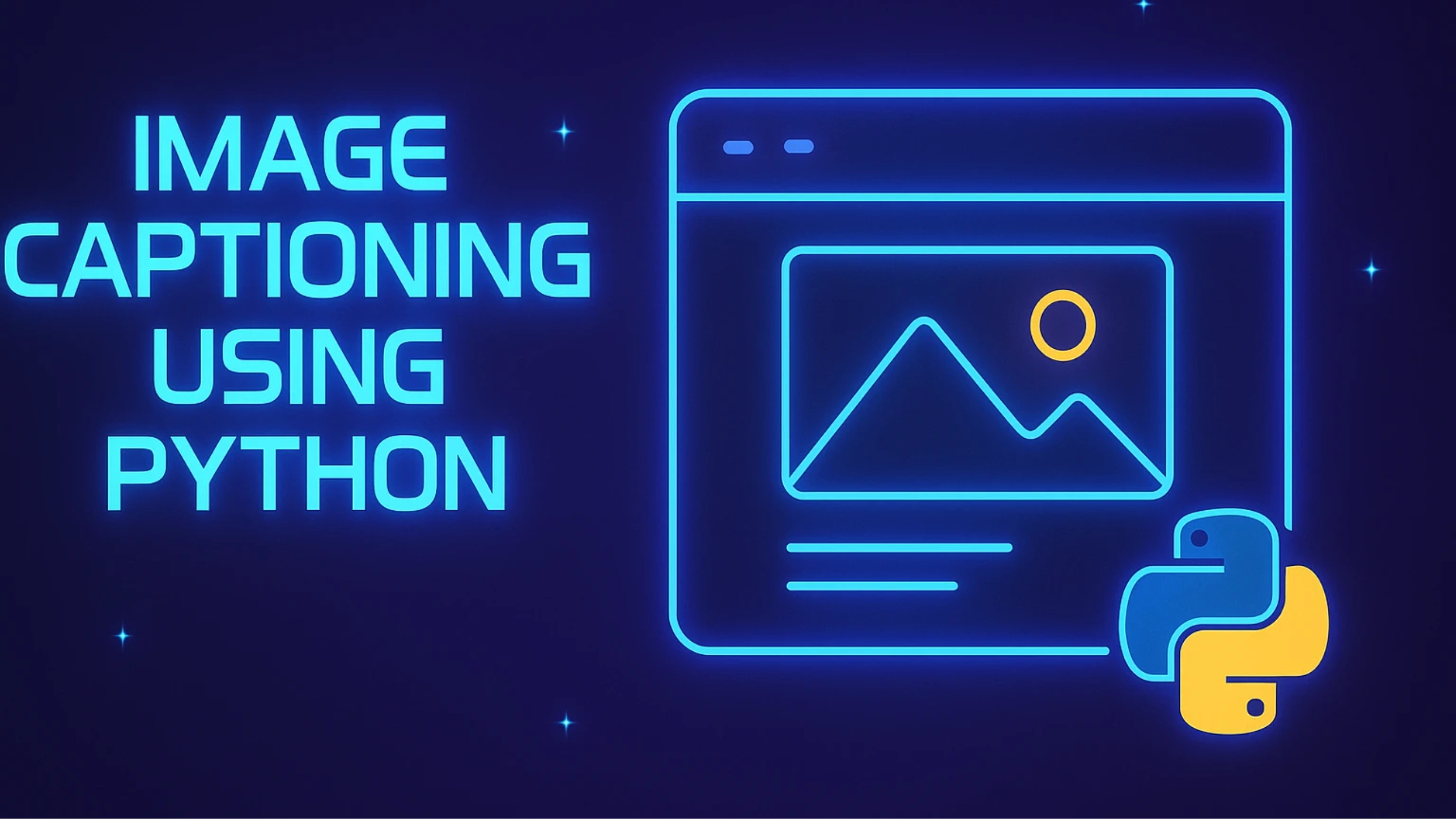
Image Captioning Using Python
Image Captioning Using Python: A Deep Learning Approach
Have you ever wondered how Google Photos or social media platforms automatically describe what’s in an image? This magic is called Image Captioning — a fascinating blend of Computer Vision and Natural Language Processing (NLP).
In this blog, we’ll walk you through building your own image captioning model using Python, powered by VGG16, LSTM, and Flask for deployment.
What is Image Captioning?
Image Captioning is the task of generating a natural language description of an image. It requires understanding both:
-
Visual content (via CNNs like VGG16/Inception)
-
Language structure (via RNNs like LSTM or GRU)
Tools and Libraries Used
-
Python 3.x
-
TensorFlow / Keras
-
VGG16 (for feature extraction)
-
LSTM (for sequence generation)
-
Flask (for web deployment)
-
Jupyter Notebook (for model training)
-
NLTK & BLEU (for evaluation)
Dataset Used
We used the Flickr30k dataset, which contains over 30,000 images and five captions per image. Each caption describes the contents of the image in natural language.
Model Architecture
The model follows an Encoder-Decoder structure:
-
Encoder: Pre-trained VGG16 (excluding the final layer) extracts image features.
-
Decoder: An LSTM network takes the encoded image and generates a word-by-word caption.
Model Summary:
Image -> VGG16 -> Feature Vector (4096 dims)
Caption -> Tokenized & Embedded -> LSTM
Concatenate Features + LSTM -> Dense -> Softmax
Implementation Steps
1. Image Feature Extraction
modelvgg = VGG16()
modelvgg = Model(inputs=modelvgg.inputs, outputs=modelvgg.layers[-2].output)
2. Preprocessing Captions
-
Converted to lowercase
-
Removed punctuation and numbers
-
Added
startseqandendseqtokens
3. Tokenization and Padding
tokenizer = Tokenizer()
tokenizer.fit_on_texts(all_captions)
4. Model Training
-
Input: Image features + partial caption
-
Output: Next word in the caption
-
Trained with categorical cross-entropy
Web Deployment with Flask
To make our model accessible, we built a Flask web app where users can:
-
Upload an image
-
View the AI-generated caption
-
Preview the uploaded image
@app.route('/', methods=['POST'])
def upload():
# Accepts image and returns predicted caption
The app also supports AJAX uploads and real-time previews with jQuery.
Evaluation with BLEU Score
We used the BLEU score to evaluate the quality of generated captions:
from nltk.translate.bleu_score import corpus_bleu
Example:
-
BLEU-1: 0.65
-
BLEU-2: 0.47
Key Learnings
-
Transfer Learning helps avoid training from scratch.
-
Sequence models like LSTM work well with textual data.
-
Web integration with Flask makes AI projects interactive.
Conclusion
Image Captioning is a powerful deep learning application that bridges vision and language. With Python, Keras, and Flask, building such systems is more accessible than ever. This project can be a great addition to your AI/ML portfolio!
Try It Yourself
You can explore the complete code on GitHub (or your hosted project). Want help deploying it live or converting it to an API? Drop a comment below!
